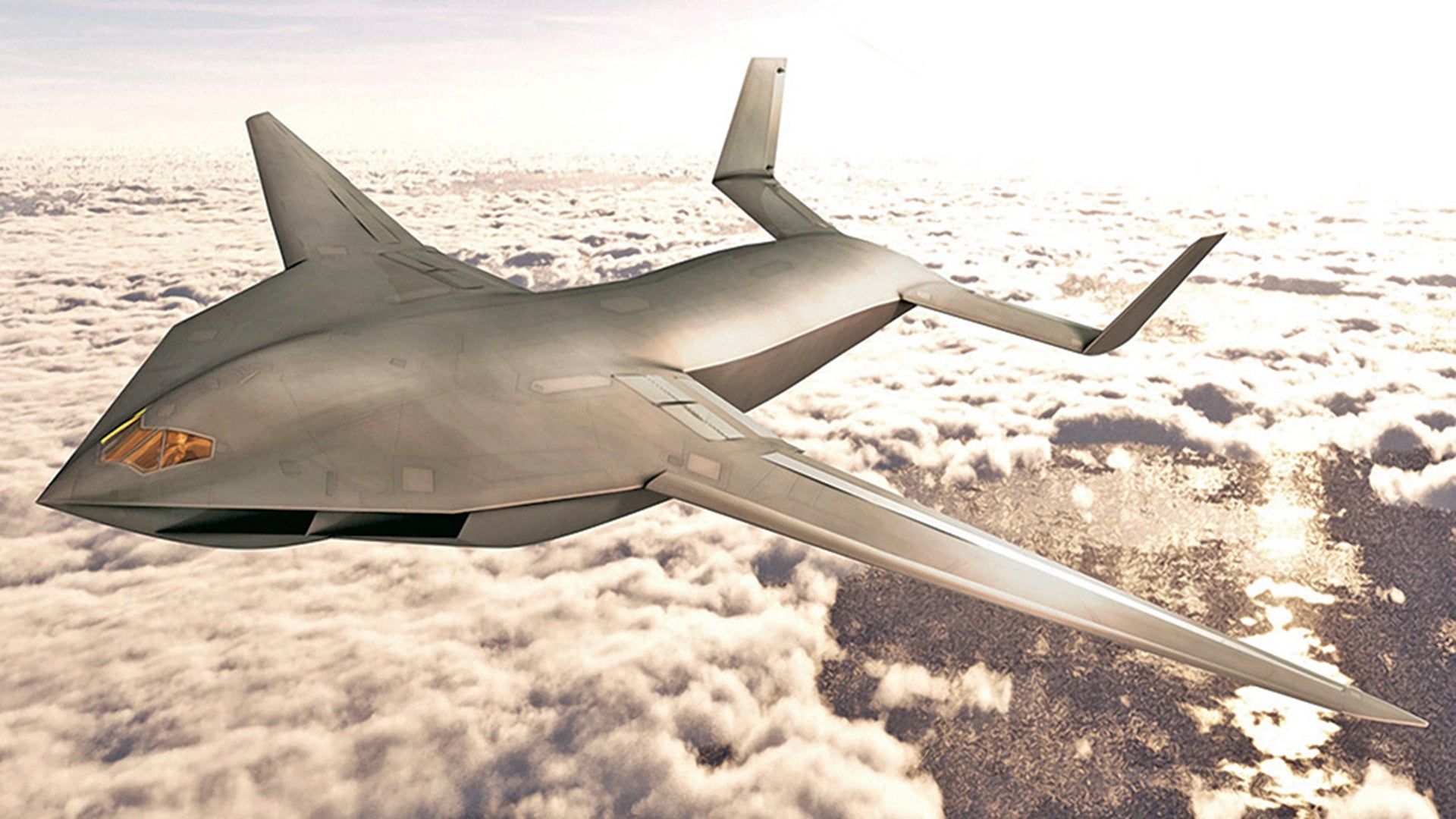Sitting on the table at Lockheed Martin’s booth at this year’s American Institute of Aeronautics And Astronautics Sci Tech Forum in Texas was a large model of a plane that looked as if it was ripped right from Hollywood’s latest science fiction war epic. And although its design surely includes loads of science, the need for such a machine is anything but fictional—a hard truth that the USAF seems to be finally coming to terms with, albeit slowly.
The USAF’s great capabilities mismatch
The term “stealth tanker” just sounds frivolous doesn’t it? Like something out of a Transformer’s movie—nice mil-tech eye candy, but not much logic behind it. Yet the reality is the concept is anything but frivolous, especially now, and the logic behind it is undeniable. The problem lies in the fact that the Air Force has dumped massive amounts of resources into developing and procuring relatively short-ranged but very high-tech and grossly expensive stealth fighter aircraft—aka the F-35 and the F-22.
In past decades, the US has fought against countries of limited geographic size and military resources. These conflicts also featured prevalent nearby basing for allied air power that was relatively safe from large-scale attacks. In fact, in the last 18 years the US has operated almost entirely in uncontested airspace. At the same time, near peer state competitors have been investing heavily in next generation integrated air defense systems, ones that have far greater range, sensor fidelity and data fusion abilities than those that came before. The “layered” nature of these new air defenses, their mobility, and their increasingly networked means of operations also means they are far more resilient than their simpler and often fixed-position progenitors.
So what the USAF has ended up with is a glaring mismatch between the combat capabilities of its most advanced and most numerous tactical assets, and their ability to fly far enough to actually strike enemy targets that necessitate their extreme and high-cost abilities. It is an issue we have touched on many times before—the fact is that anti-access/area-denial (A2/AD) capabilities, including these new air defense systems, will increasingly push America’s fighters out too far from their targets to be effective in most peer state conflict scenarios.
Combat radius conundrum
The F-35A, with a combat radius of roughly 600 miles, will have to rely on fuel from a tanker or basing no further than the distance from the targets it is tasked with striking. In reality this distance will often be decreased considerably when fuel for contingencies and unique mission flight profile demands are concerned.
Fighters like the F-35 and F-22 may be stealthy, but their support assets, namely their tankers—KC-135R, KC-10A, and soon the KC-46A—are anything but. This leaves them vulnerable to detection and attack. Not just by increasingly long-range surface-to-air missiles, both those based on ships and on land, but by long-range fighter-interceptors—some of which are of the stealthy variety—carrying very long-range air-to-air missiles. America’s potential enemies know this, especially China, and plan on exploiting it to the max during a time of war. Not just that, but nearby basing, even within many hundreds (and even thousands) of miles from the front lines will likely not be achievable for allied aircraft due to the ballistic and cruise missile capabilities of America’s most capable enemies.
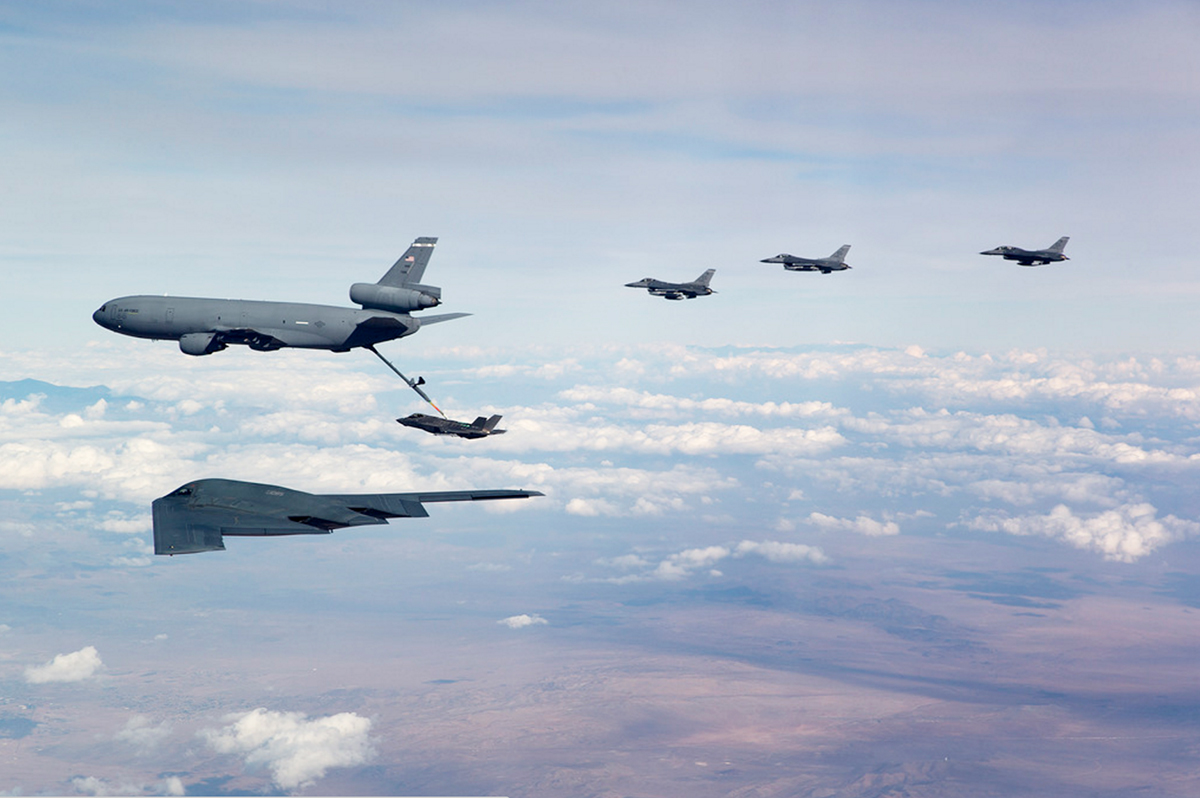
When it comes to providing close air support and counter-air patrols over ground troops operating in contested areas, something the USAF says it will have to provide in the future, doing so with fifth generation fighters supported by traditional tankers may be impossible. Loitering over an area of the battlefield to provide cover for troops below burns a lot of gas and takes a lot of assets to achieve in a persistent manner. Today, F-16s can stay on station for less than an hour without requiring fuel from a tanker operating in relatively close proximity. The F-35 won’t be drastically different in this respect, and the F-22 is already known to be quite tanker dependent with a fairly short combat radius, especially when using its supercruise capability for extended dashes.
So basically, the USAF has fighters that have been built at great cost to be able to fight in contested airspace, but only if that airspace is in close proximity to a tanker. Yet once again, the problem is that a tanker may be pushed out many hundreds of miles from an enemy’s borders in order to be safe from SAM attacks, and even then enemy naval vessels and fighters could still post a serious threat. Couple this with the fact that America’s most capable foes have large land masses, and key targets may be located hundreds, or even thousands of miles from the country’s border or shoreline. This means that an F-35A’s combat radius may be 600 miles, but that may only give it a hundred or two hundred miles of penetrating range into the enemy’s territory, due to the distance its flying fuel source has to stand off from the country’s border. For persistent operations like combat air patrols, armed reconnaissance and close air support, any flight of fifth generation fighters may have just a few minutes over their target area before having to make the long trip back to the tanker for gas.
USAF planners have built a force than can technologically fight the enemy in its own backyard, but does not have the gas to do it effectively against a major peer state competitor in most theatres. Clearly the USAF has a big problem here, and as enemy A2/AD capabilities increase, and the safe operating distance for existing tanker aircraft increases, it will only get worse.
Am armada of fighters and tankers seen during the opening days of Desert Storm:
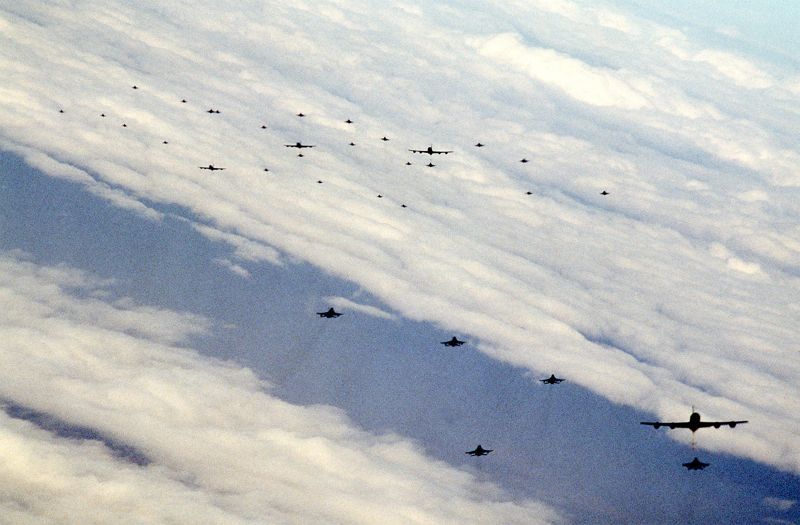
Red Flag may be one of the best examples of this. For two or three weeks a few times a year the Air Force’s largest set of wargames takes place north of Las Vegas. Weekdays see two major launches and recoveries each day (known individually for each aircraft as “Vuls” or vulnerability periods), one at night and one during the day. During any one of these large force employment missions over the Nevada Test and Training Range complex, F-22s, F-16s, F-15s and all the rest of tactical fighter cadre needs to get gas from tankers about halfway through the three-hour long air battle. The entire range complex where this air combat takes place equates to about 12,000 square miles of airspace—akin to an 80 mile by 145 mile area—and a good portion of that is not always used for the exercise or is restricted for other purposes (like Area 51’s box). This airspace begins less than 100 miles north of the base where almost all the participants in the exercise launch out of—Nellis AFB.
This relatively tiny patch of sky—huge as far as ranges go but infinitesimal compared to fighting in an A2/AD environment like the Pacific—that sits just minutes from the base supporting almost all its players, still sees America’s short-legged fighter force gulping down thousands of pounds of fuel off the boom of a small armada of tankers launched each mission. And these tankers are positioned at the edges of the airspace described above, giving thirsty fighters quick and easy access to the fuel they carry.
Obviously in a long-range combat situation measures would be taken to drastically extend a fighter’s range and air crews would be far more selective about using their gas compared with a training operation like Red Flag. But still, it is a telling example to draw from and underlines just how dependent the bulk of America’s air power is on close proximity tanker gas.
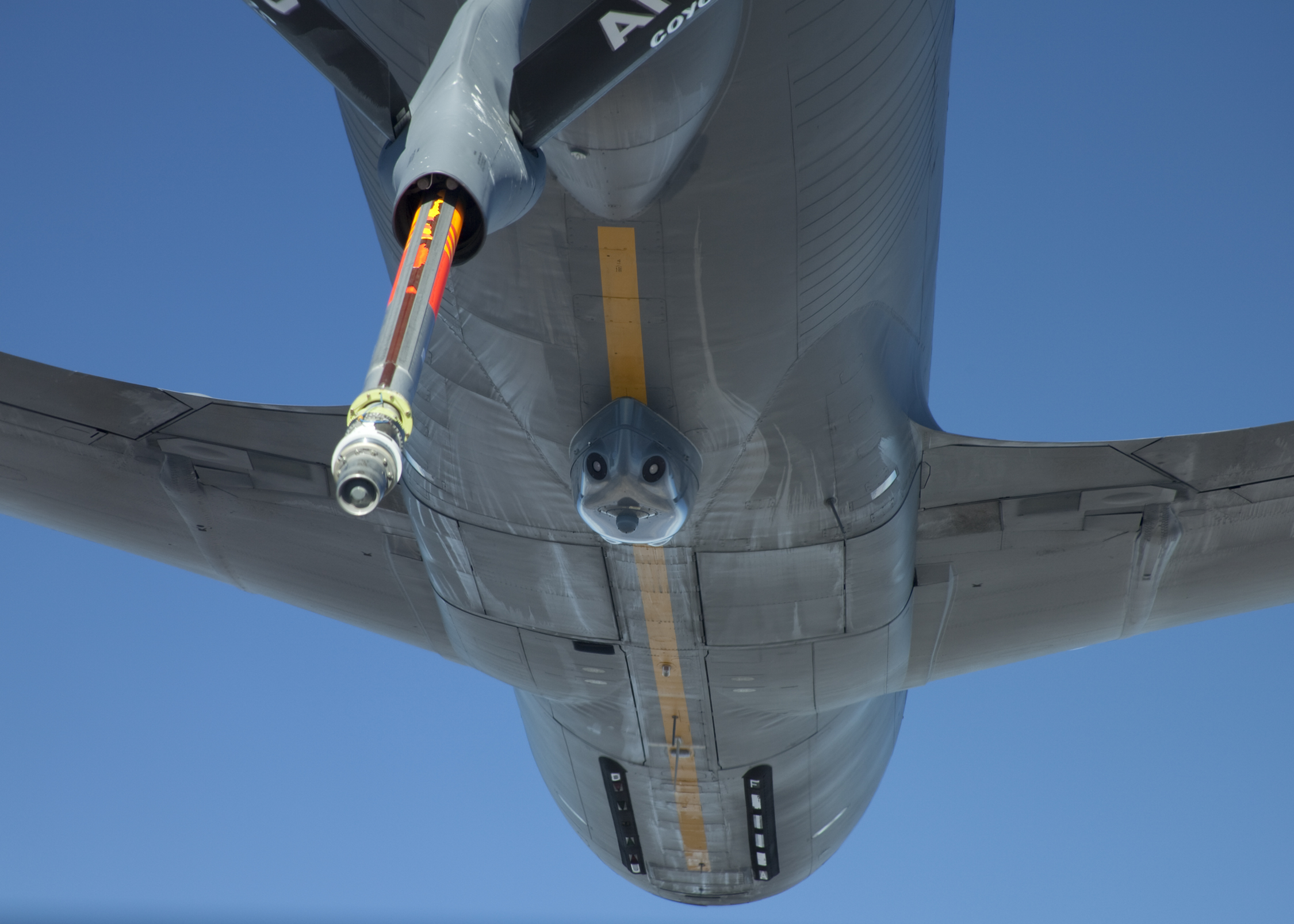
Take that same Red Flag strike package, and launch it 2,500 miles from the Nellis range complex, and make it so the tankers that support it can’t get within 350 miles of the range’s borders and you can see how the whole operation becomes much more asset intensive, complex, and frankly, less effective. In the end, if the tanker can’t survive close enough to the assets it supports, the mission simply doesn’t happen, or in the case of deep-strike missions against fixed targets, the mission may get passed on to far less prevalent platforms like the B-2A or a $1.5 million cruise missile—both of which cannot sustain a major conflict alone. Not even close.
Multiple solutions to a pressing problem
This glaring deficiency can be addressed in a number of ways, and the best way to do so would be to combine a cocktail of strategies, although that may be wishful thinking.
First off, the USAF could rapidly develop and procure unmanned combat air vehicles which offer far greater range and loitering time, along with a ton of other advantages, than their manned counterparts. The problem is that even though the technology clearly exists, having shown incredible promise during its development over a decade ago, the USAF acts as if it doesn’t. As I have explained in great detail before, either the USAF has been working on the technology deep in the classified world or they haven’t at all due to a handful of petty factors. Either way, not fully embracing advanced unmanned combat air vehicles now is extremely detrimental to America’s national security.
Northrop Grumman rendering of UCAVs in action:
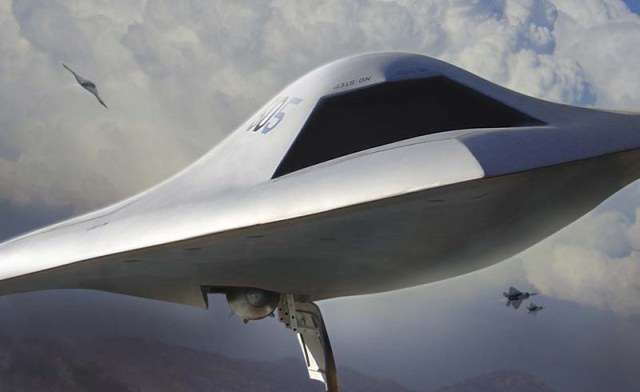
The service could also procure fighter-bomber aircraft that cast aside maneuverability in exchange for range, stealth, weapons capacity and in some cases sustained speed. Two concepts, both based on the Advanced Tactical Fighter contestants, had been floated previously to satisfy such a mission set—the FB-22 and the FB-23. Either of these concepts could have provided advanced air-to-air and air-to-ground (and probably electronic attack) capabilities over regional ranges that would allow tankers to standoff at very long distances. They could also carry more weaponry than their more highly maneuverable fighter counterparts, which means they can destroy more target when in enemy territory.
Neither of these aircraft were ever built, but rumors circulated at one time that an FB-23 like design was tested in the late 1990s, although once again, this was just a rumor. Aside from some official models that have popped up, no hard evidence exists that the design ever made it into flying form.

The FB-22 concept surfaced in the mid-2000s as part of a short-lived “interim bomber” initiative. This was a big mistake, and frankly, it was very easy to see that it was one at the time. The FB-22 was the right aircraft for the future, especially in its most elaborate and stealthy tailess configuration. Politics were involved in all this of course. Why would Lockheed want to build an FB-22 when it had the ultimate cash cow about to fly—the F-35? Meanwhile, for the USAF, the regional fighter-bomber concept threatened both high-end fighter and bomber procurement initiatives at the time, so there was not much incentive to see it through no matter how logical it seemed. With the idea of restarting the F-22 production line becoming mainstream, developing an FB-22 alongside an improved F-22 would be extremely logical, although the chances of any of this happening are very, very small if not non-existent.
Another way to help the situation is for the USAF to invest much more heavily into survivable long-range strike capabilities, namely in the now active B-21 Raider program. Purchasing a couple hundred or more of the bombers instead of around one hundred, at the expense of a portion of F-35A production, could offset some of the long-range strike risk that currently plagues the USAF. Although cutting F-35 numbers dramatically to build more B-21s would be a hard sell, especially considering the power of the F-35 lobby.
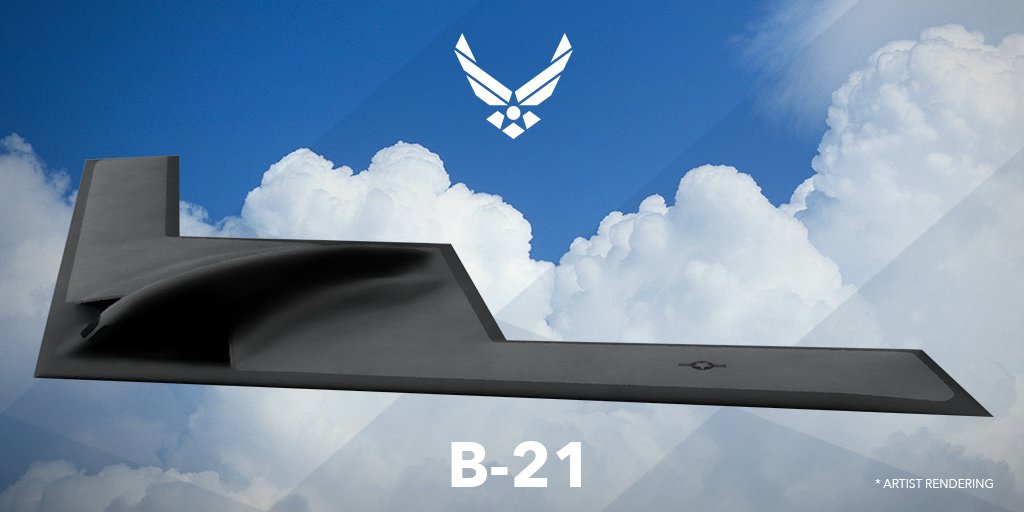
Some have floated the idea of just buying more standoff weapons that can be fired from F-35s and other tactical jets from a couple hundred miles away from their targets. The truth is that this is a must as it is in order to slowly degrade and dismantle an enemy’s advanced integrated air defense system. No aircraft is invisible, and using standoff weaponry early in an air campaign to open up weaknesses in an enemy’s air defense will be required even for 5th generation fighter aircraft to operate in the area without assuming excess risk.
Even in a limited conflict with an enemy like China, tens of thousands of targets that would need to be hit. The shear size of such a target list would make a strategy relying heavily on standoff weaponry unaffordable and unsustainable. It is simply a function of how many tons of weapons need to be thrown at a campaign to make it effective. Relying on one-use, high-cost standoff weapons, which cannot be replenished quickly, is simply unfeasible and very risky. Also, these weapon may be capable against fixed targets, but for moving targets and for targets of opportunity they are more rigid in nature compared to tactical aircraft sporting shorter-ranged and far more affordable munitions.
F-15E launches a stealthy AGM-158 Joint Air-to-Surface Standoff Missile (JASSM) during testing. -Lockheed Image.
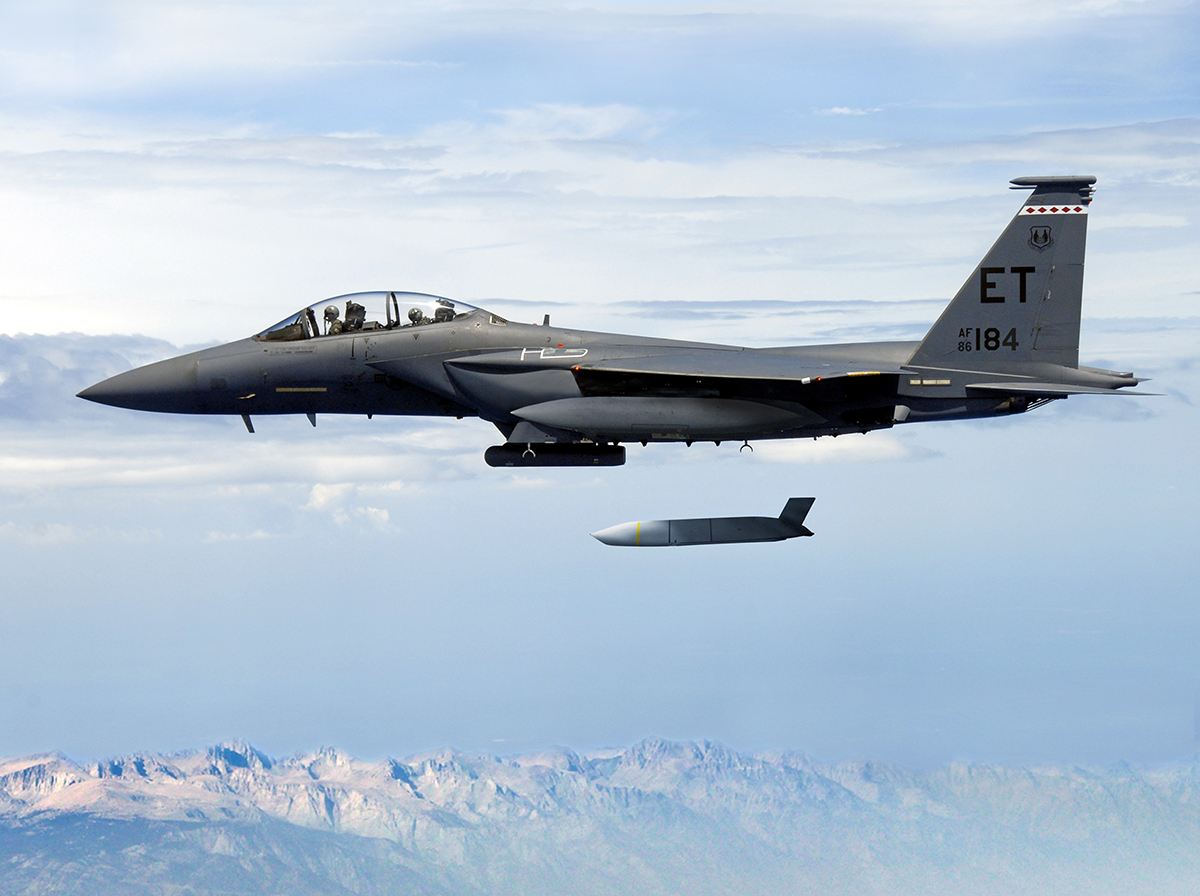
The final alternative is that the US develops a stealthy tanker aircraft to match its big short-ranged stealth fighter fleet—one that can push far closer to enemy territory and survive than those based on existing commercial airliners.
This aircraft could work as an enabler for the short-ranged fighter fleet not just in terms of offloading much needed gas within the enemy’s A2/AD bubble, but also by working as a networking hub for F-35s, F-22s, B-2s, stealthy unmanned systems and other aircraft using low-probability of intercept data-links. It may also be able to offer electronic warfare support, such as standoff jamming to help mask the location of stealthy aircraft operating downrange. It could even be outfitted with a laser to help defend itself from attacks while operating beyond the edges of contested airspace.
Considering how deeply invested the USAF is in the F-35 program, and the limited number of very costly F-22s they already have in inventory, as well as their bizarre propensity to act as is UCAVs don’t exist, the stealth tanker seems not only like their best bet, but an entirely necessary one. And even if UCAVs eventually come into the picture, they too can benefit from a stealthy tanker.
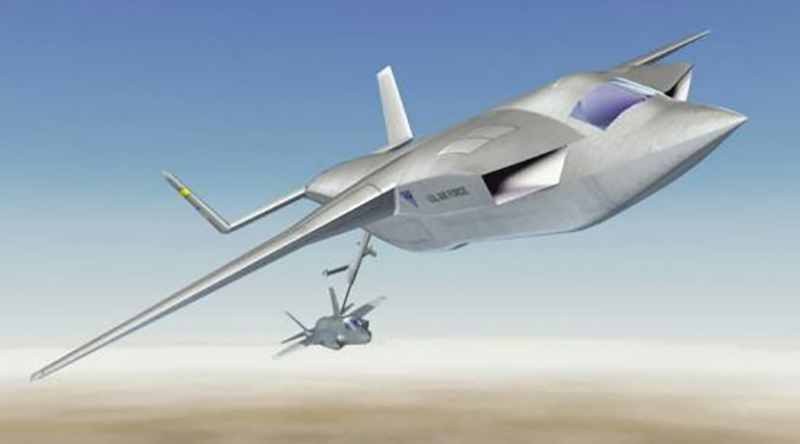
Not a new problem or a new solution
The thing is that it’s not like the glaring need for a stealth tanker is really anything new, but it has come into the domain of the mainstream defense media in recent months after General Carlton Everhart II, chief of Air Mobility Command, floated the concept last September, stating:
“What is on the cusp of groundbreaking technologies? That is what we want on that airplane?… Is it stealthy? I don’t know. Is it large? I don’t know. Is it medium, is it small, what is the combat offload?…Now that you are getting near-peer adversaries who have different technologies and they have studied the way we fight, that is starting to change our calculus of how we might execute the next war.” He continued to describe a platform with an increased emphasis on low-observability.
But once again, it is almost laughable that this is a major issue just now. It’s not like China’s drive to exploit every weakness in America’s technological warfighting machine and battlefield doctrine is something new, nor is the USAF’s massive addiction to tanker gas. In fact, I have been saying this for many years, putting it in writing in various articles, including this passage from 2012:
“It is somewhat preposterous to think that if the US were really going to face a peer state with serious firepower that we would have an elaborate and incredibly expensive force of short-legged tactical fighters sweep towards the enemy’s borders undetected, followed by big, unstealthy tankers lumbering a couple hundred miles behind. With other countries procuring long-range surface to air missile systems, both land and sea based, as well as stealth fighters, the way we have done the fighter business for decades simply will not do. With an almost all stealth fighter force, you need a contingent of stealthy tankers to support such a fleet during combat far from home, especially during the opening weeks of such a conflict.
These stealthy tanking aircraft would not be used as aerial “bridge” tankers in the traditional sense, such as dragging fighter aircraft across benign airspace enroute to their targets, or working as “lily pads” for tactical aircraft regularly traversing long distances. Instead they would be utilized to accompany low observable combatants the last 500 miles or so from their targets, and to provide them with gas close to the enemy’s shore, as well as on their way out of enemy air space after completing their missions…. In the end betting the budgetary farm on a fleet of thirsty stealth fighters that have combat radiuses in the realm of 500 miles while at the same time stating that the Pacific Theater, with all of its distance challenges, is our new strategic focus, is just ridiculous without a stealth tanker.
China is fully aware that it cannot do battle with our tactical fighters on a toe to toe basis and win without saturating an area with aircraft and thus absorbing huge losses. Yet they do know of our ridiculous dependence on aerial tankers. It is a lot easier to shoot down a tanker that eight individual F-22s depend on for gas than to shoot down the F-22s themselves. Hence China’s J-20, an aircraft built with long-range in mind and a has stealthy skin, all aimed at sneaking by our fighters and taking out their source of nutrition, the lumbering and very detectable aerial tanker. With a stealth combat tanker this damning issue ceases to exist.”
China J-20 which is slated to enter limited service with the PLAAF soon. -AP photo
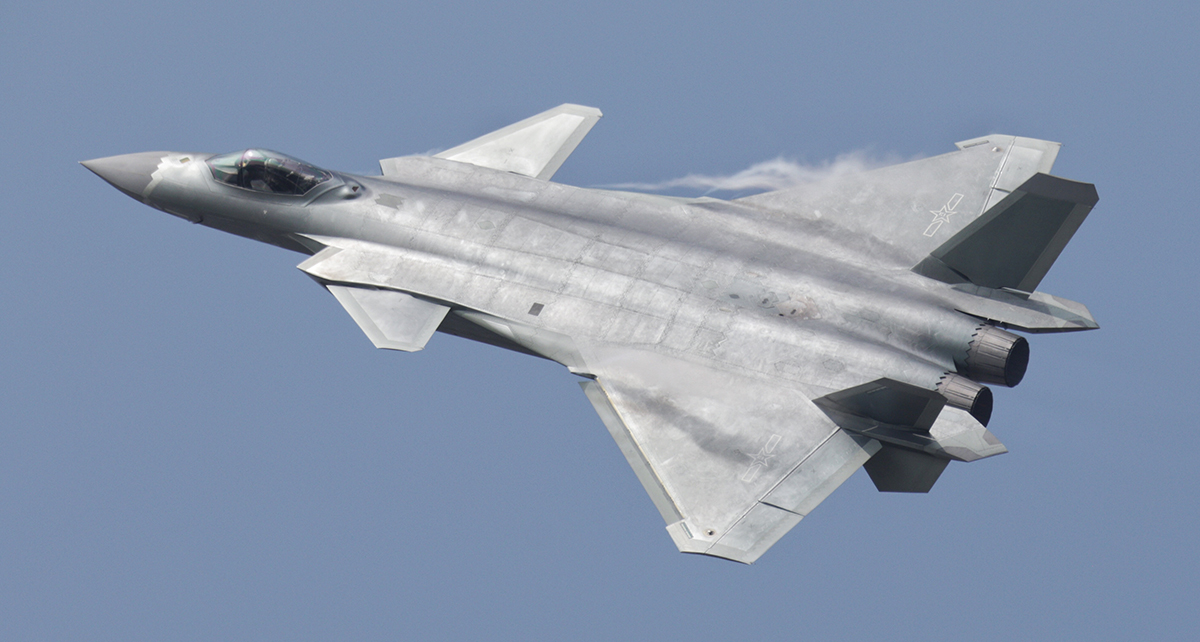
That same year I also wrote extensively how America needs a “heavy stealth revolution” in terms fielding low observable tankers, transports, bombers and “flying sensor and communications trucks,” and later that year on the possibility into combining all these capabilities into a common low-observable platform. The latter of which obviously didn’t happen as America’s next stealth bomber, the B-21 Raider, is now well underway development-wise. This could have been a massive missed opportunity, but with the possibility of a stealthy tanker on the USAF’s horizon it would be very smart to include even a limited tactical transport capability along with it if possible, or potentially adapt the new stealth bomber design for the stealth tanker role.
The truth is that stealthy transports are something the Pentagon has been after for a very long time. Many concepts originated under a veil of secrecy, such as SENIOR CITIZEN and SOFTA, which were focused on satisfying various short-takeoff and landing stealthy tactical airlift requirements. The need for this capability was largely borne out of the ashes of the Desert One/Eagle Claw debacle of 1980. It is unclear how many of these concepts made it to the test flight stage, but it is likely at least a handful did.
Today the Air Force Special Operations Command’s (AFSOC) CV-22 Osprey, although not a stealth aircraft, has low-level penetration and electronic warfare defensive capabilities that allow it to fulfil this role to some degree and in some circumstances. The stealthy Black Hawks used in the Bin Laden raid also fill a part of this mission profile as well, although over a very limited range. Yet having the ability to insert special operations teams deep behind enemy lines via a stealthy high-altitude penetrating transport opens up a ton of new possibilities when it comes to future battles, especially those against peer-states with large geographical areas. It also fits the Pentagon’s lust for enhanced forcible entry capabilities.
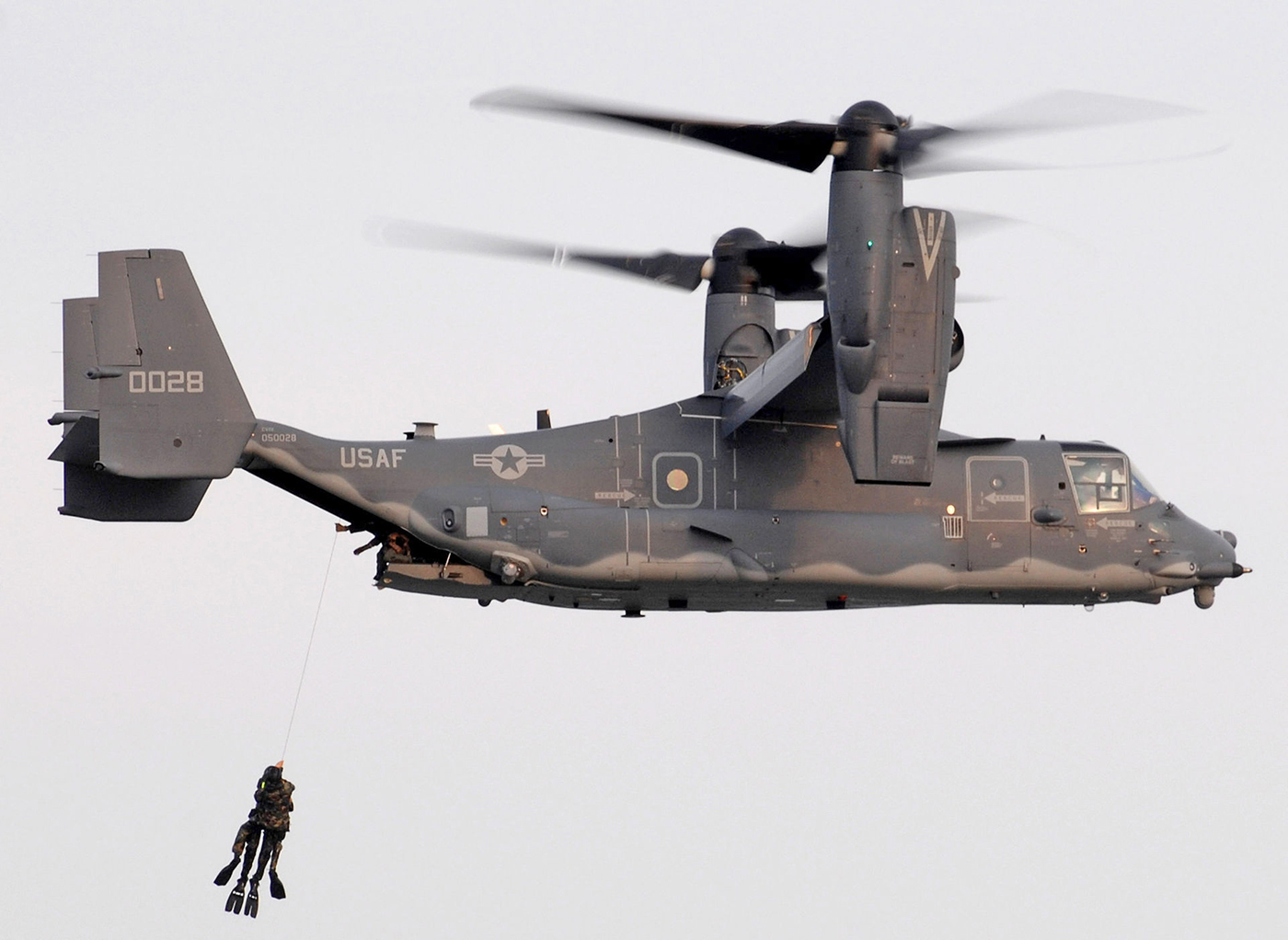
Even procuring a stealth tanker that is mainly just that, a tanker, is absolutely necessary if the USAF, and the Pentagon in general, wants to continue investing very heavily on short-ranged manned 5th generation fighter aircraft without wasting tons of money doing so. The problem is that developing a big stealth jet like Lockheed’s concept model is historically a very expensive affair, especially considering the design is not being piggybacked on an existing airframe. Even if this new aircraft’s subsystems are off the shelf, integrating them into an entirely new design, and testing that design, won’t be cheap.
Stealth tanker providers
The Long-Range Strike Bomber, now known as the B-21 Raider, is slated to cost around $511 million per copy. This aircraft already has a ton of risk reduction work done on it, possibly including flying articles, and largely draws on mature subsystems to lower cost, risk and developmental timeframes.
The B-21’s price, which has been officially validated twice, is still seen as optimistic by many, especially considering the USAF’s past track record on developing new combat aircraft, and particularly bombers. But that $511 million price tag only comes after tens of billions will have been spent on development for the type. With this in mind, building yet another large stealthy aircraft, even one that is not as stealthy as penetrating bomber or loaded with advanced sensors and combat systems, will still be a very expensive endeavor. Considering the USAF can’t even afford the Air Force it already has, nor its list of pressing procurement priorities, achieving stealth tanking capability at the lowest possible cost and risk is likely the most attractive avenue, regardless of what additional capabilities the aircraft may bring to the table or not.
There is a real possibility that Northrop Grumman could adapt their still yet to be unveiled (in any great detail at least) B-21 Raider design for the tanking mission, offering a stripped down “KB-21” model for the stealthy aerial refueling mission. This could save massively on development costs, and may work to decrease the unit cost of the B-21 program overall by increasing airframe production numbers.
Boeing has provided jet tankers to the USAF for 60 years, with the 767 based KC-46 moving into production now. -Boeing
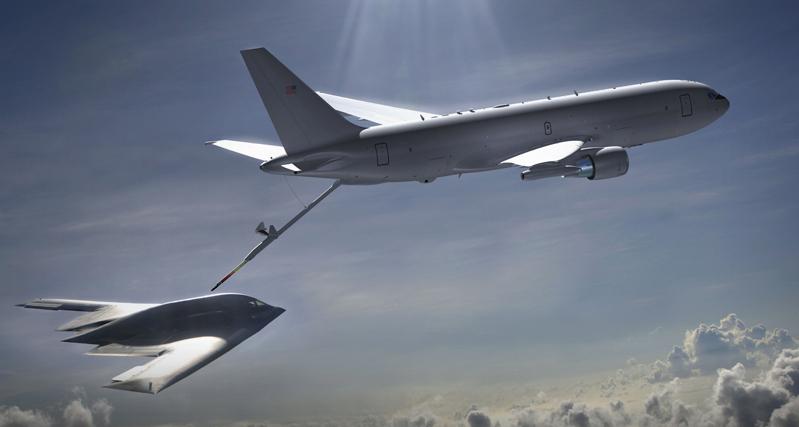
Northrop Grumman could also pair with another contractor, like their competitor on the ruthless KC-X and Long Range Strike Bomber competitions of the past, Boeing, in an effort to win a stealthy tanker contract over Lockheed Martin. Boeing could provide all the aerial refueling know-how while Northrop Grumman provides a developed high-end stealth airframe that the USAF is already planning on operating over 100 of. As we recently learned, even turning a mature commercial airliner that has already been turned into a tanker once before into another tanker can be a serious undertaking. Northrop Grumman paired with Boeing could offer a stealth tanker solution that features both commonality with existing systems—B-21 and KC-46A—as well as low risk and extremely high capability.
What Lockheed may have going for it is that its tanker design, as expected, appears to be based on the “Speed Agile” concept that the company, Boeing, NASA and the USAF have been toiling with for years. Speed Agile is a decade long initiative to explore a new design concept for a short takeoff and landing capable tactical transport that also offers extreme efficiency in cruise and heavier lifting abilities than existing tactical transports. The USAF describes the program officially as such:
“The Speed Agile Concept Demonstrator (SACD) concept is a four-engine, multi-mission aircraft that offers speed agility; operates routinely from short, improvised airfields; carries larger and heavier payloads; and employs precise and simple flight controls. The SACD’s high-efficiency STOL design incorporates a hybrid powered lift system. This lift system features a simplified mechanical design and low-drag integration. Together, these features greatly reduce both the vehicle weight and overall drag on the vehicle, resulting in greater efficiency and payload capacity than conventional powered lift systems. An aircraft employing Speed Agile technology could potentially operate from short, unprepared airfields. These benefits, coupled with the overall vehicle efficiency, could result in an extremely versatile aircraft capable of quickly and safely transporting equipment, supplies, and troops to remote areas.”
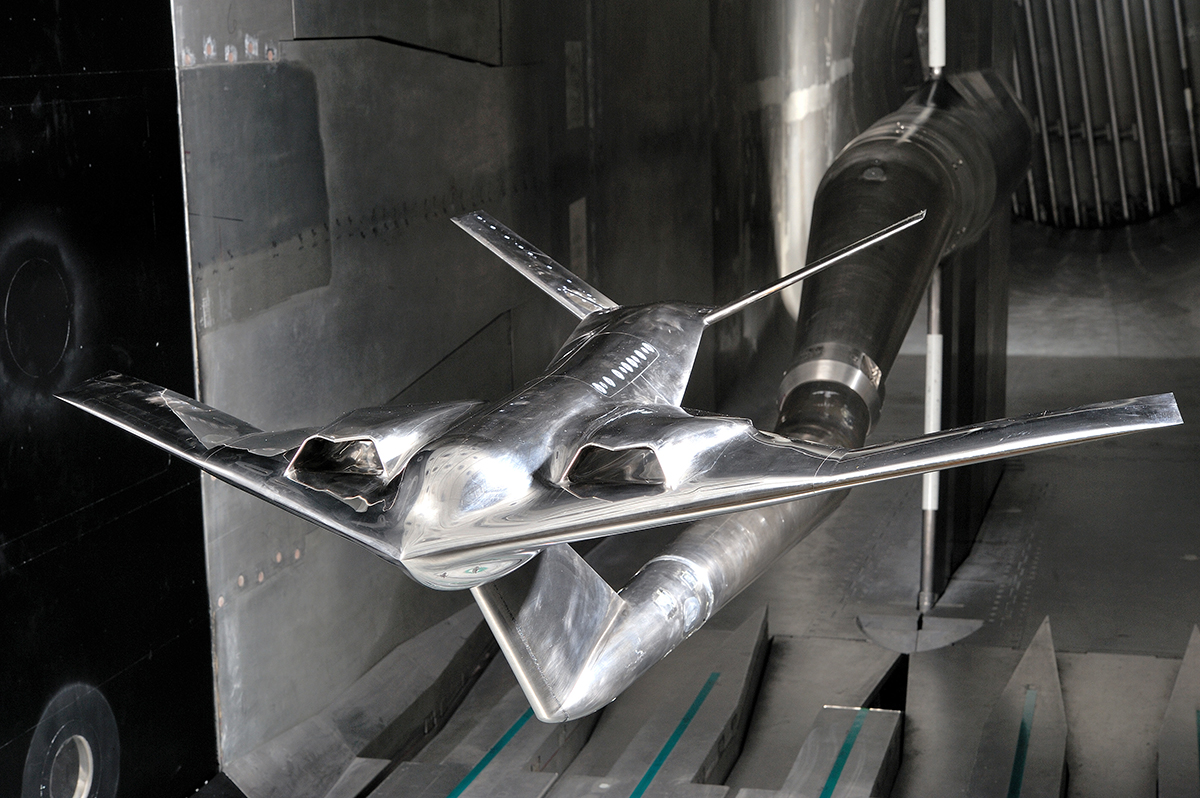
Large amounts of data on this design concept, in multiple unique configurations, has been amassed over the last decade or so, including extensive wind tunnel testing. This gives Lockheed its own unique advantage, and may allow them claim their design already has risk taken out of it and represents a substantial return on investment for money the USAF has already spent. Additionally, the Skunk Works have become very well versed in leveraging the most effective manufacturing processes for large structures like those used on a stealthy transport aircraft.
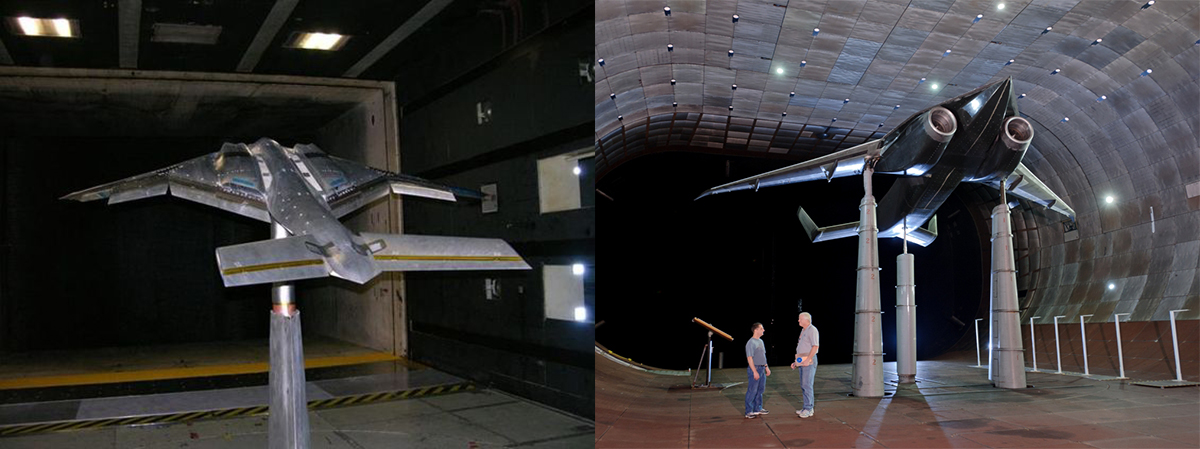
By basing their stealthy tanker design on Speed Agile technology, Lockheed could very well include tactical transport capabilities into it, something Northrop Grumman could not do with a “KB-21.” Although a pure flying wing design like B-21 would likely be significantly more stealthy than Lockheed’s concept, especially when it comes to evading a wide spectrum of radar bands from all aspects, the need for such a high degree of low observability for a stealthy tanker is debatable.
By leveraging what they have learned from Speed Agile could also offer the company its own significant advantage as basically the USAF would gain two unique capabilities in one aircraft, and there may even be funding from Special Operations Command to help develop and field such a platform.
Even if transport capabilities were omitted from Lockheed’s design, being able to takeoff from shorter runways, even by couple thousand feet less than its airliner-derived tanker cousins, could open up far more numerous basing possibilities. With more accessible airfields available to it, such a tanker could operate forward of its more predictably based counterparts. This could mean greater sortie generation and better survivability, especially in the vast Pacific theatre.

Then again, Lockheed has not built a large aircraft since the C-5 Galaxy and L-1011 Tristar, so they will probably need a partner to pull an aircraft like this off. Of course Boeing comes to mind not just because they are masters at building big reliable jets, but because they were also a team member on Speed Agile. In fact, there is nothing to say Boeing could not attack such a requirement all on its own, although risk sharing on big programs in this day and age may be a corporate necessity.
Solving for KC X, Y and Z
As for where the money for a stealth tanker could come from, the good news is that the USAF will have to continue replacing its rapidly aging tanker fleet as time rolls on, and the Air Force is already planning for this. The KC-46 is slated to go for a production run of at least 179 airframes if everything works out, and on the horizon is KC-Y, a competition to replace the USAF’s KC-10 Extender fleet. KC-Y is slated for execution around 2024, while another tanker replacement program, the KC-Z, is slated for a decade later. A study looking into what KC-Z should be will begin this year.
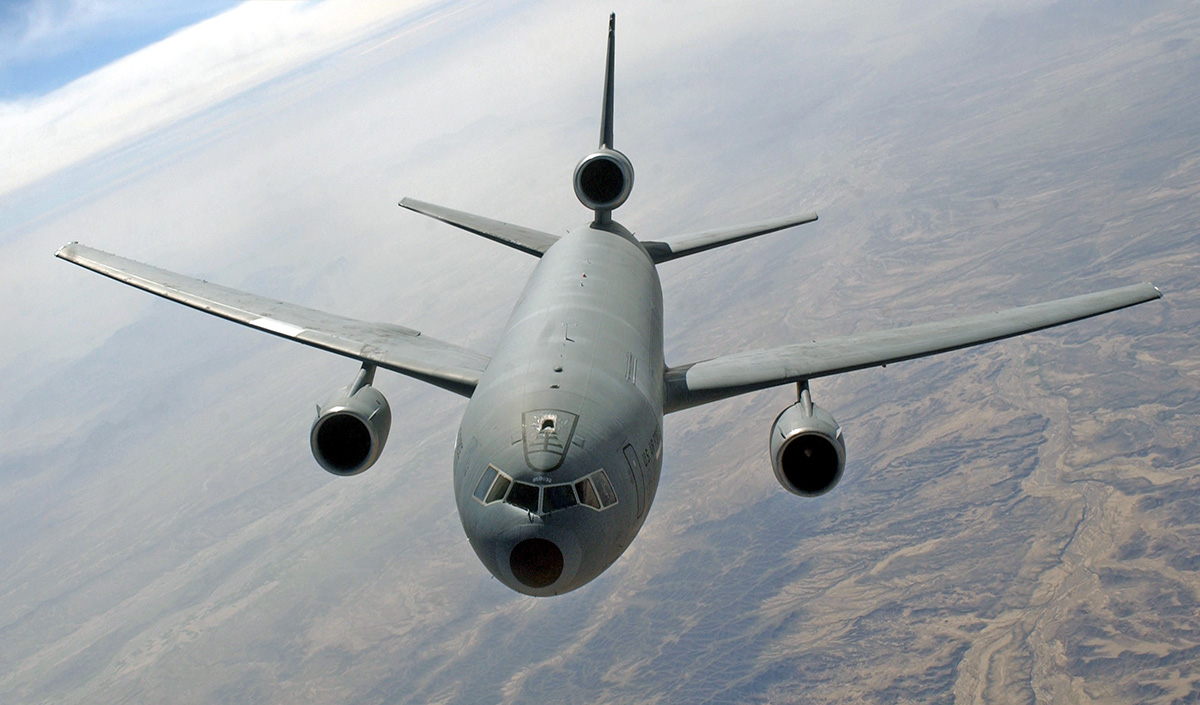
The USAF could and should remodel its tanker replacement plans, potentially buying more KC-46s and rolling KC-Y into a stealthy tanker program. The KC-Z program would effectively be dead until it would need reviving in the coming decades, at which time blended wing body aircraft may be a feasible option for providing a heavy tanker capability.
Lockheed’s blended wing body aircraft concept is slated for flight testing in the coming decade. -Lockheed
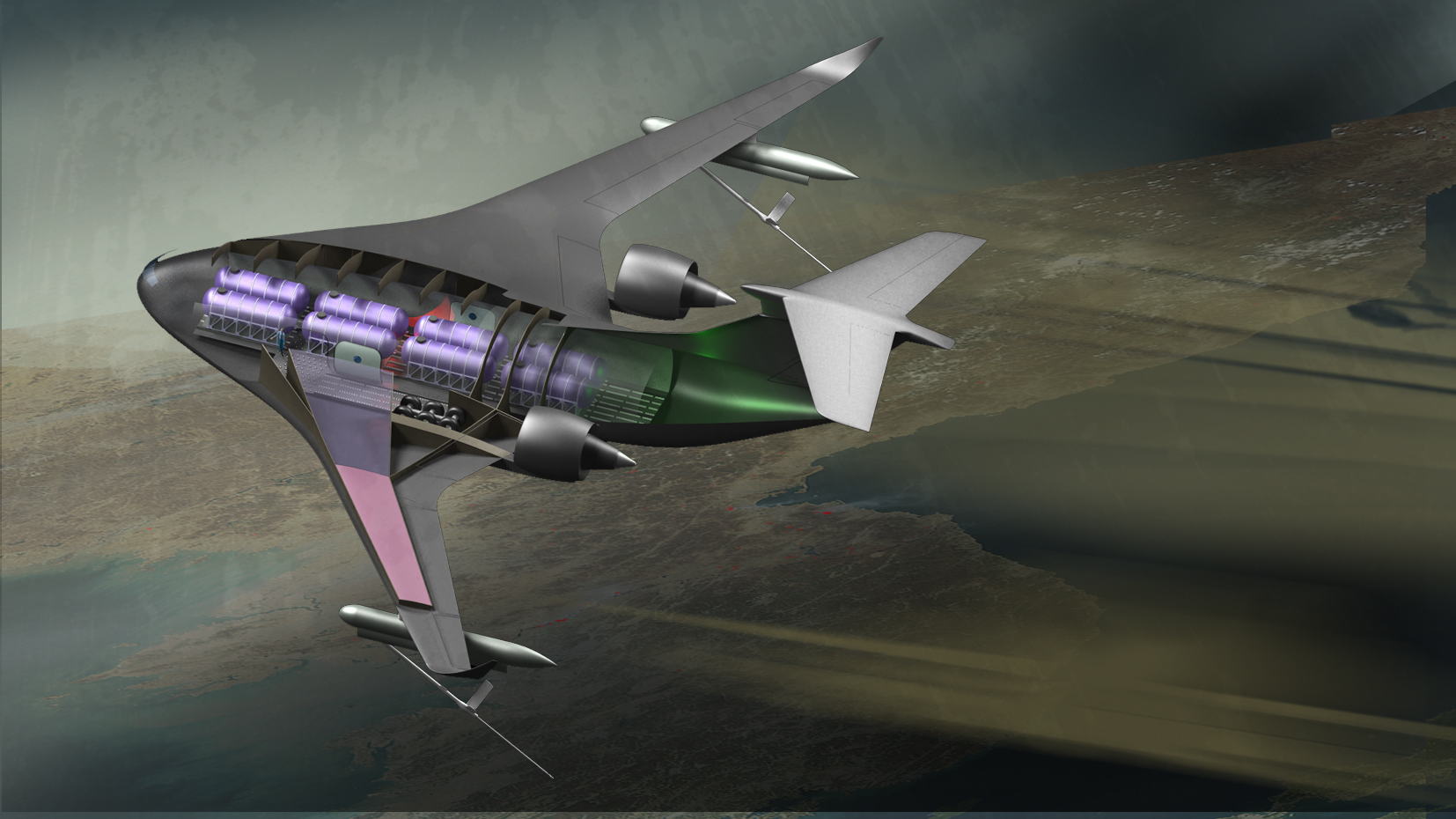
Under such a plan no KC-10 heavy tanker replacement would be available, but between the KC-46 and the KC-Y stealth tanker, the aging KC-135Rs could be more rapidly put pasture, and we already know the KC-46 offers more capability than the KC-135R it replaces. In the meantime, if the USAF could extend the life the KC-10, and/or if it needs access to a heavier tanker than the KC-46, they could look to the private sector for just that.
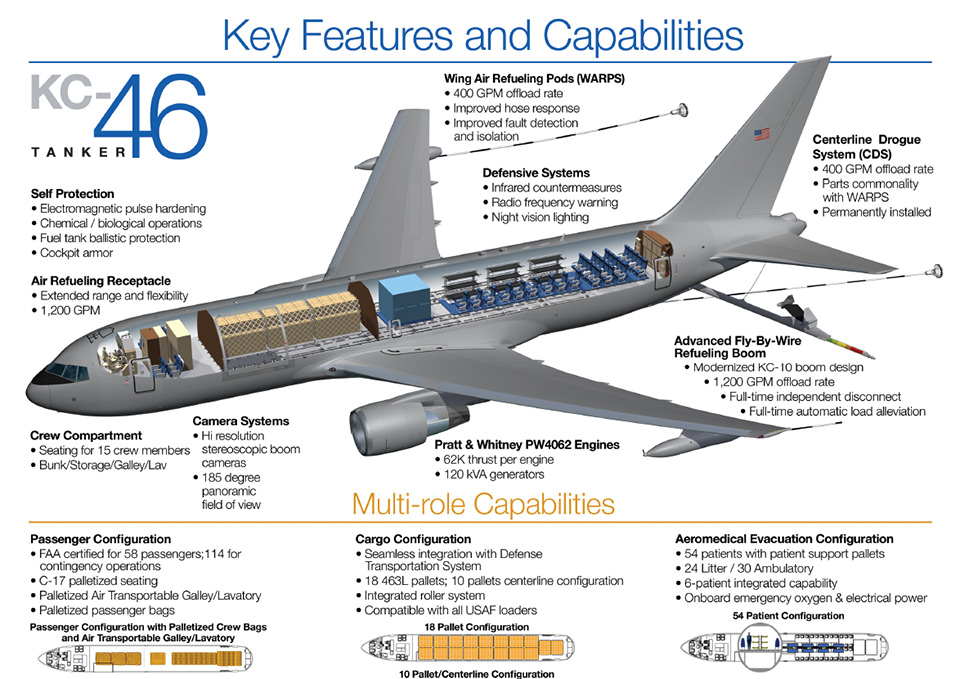
Outsourcing can be a very good thing
I have long argued the USAF should move toward obtaining a significant portion of its aerial refueling needs from private contractors who can offer tailored tanking solutions and elastic capacity. Doing so would mean the USAF would not have to invest so heavily up-front in tanker fleets or the infrastructure needed to support them, while contractors can procure fleets of smaller and larger aircraft based on what the market demands.
As the KC-46A comes online, it will be a great time for potential commercial tanker services providers to absorb retiring KC-135Rs, or introduce new platforms depending on what their customers want. Even smaller tankers, like those based on the 737 or G550, can fulfill many missions where large tankers simply are not needed, and do so at a far lower cost.
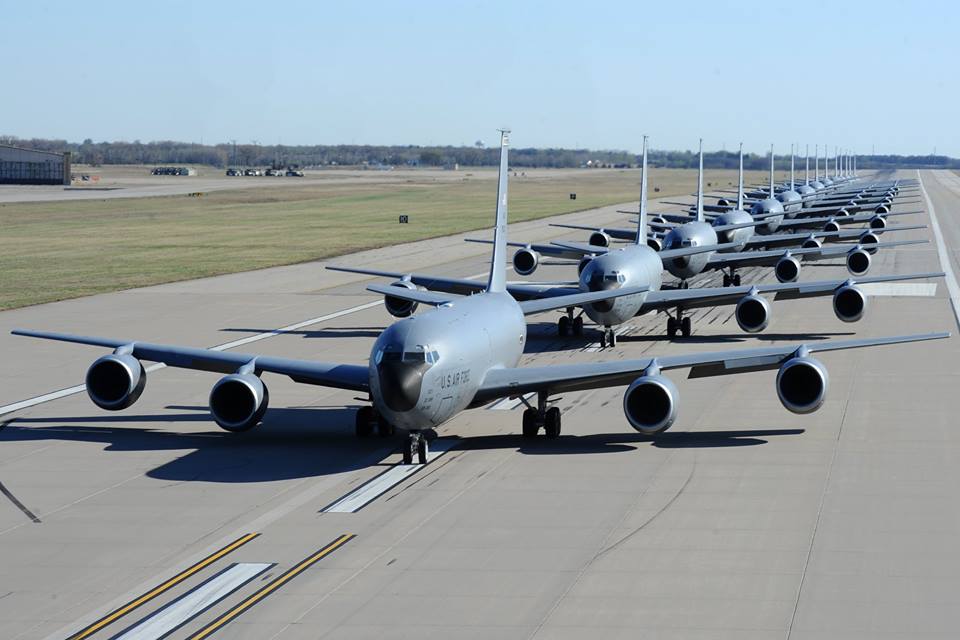
Under such a concept, it has been proven that industry, the service and the taxpayer win. On the tanking front, Omega Air has been doing this for some time now for the Navy and international customers, and other countries are following suit. Additionally, private tanker companies’ adversary air support contractor cousins will increasingly provide aggressor training for the same US Navy and USAF fighter aircraft that private tanker companies of the future could be supporting as well. Doing so will introduce competition into the marketplace and will allow the USAF to invest heavily on higher-end capabilities, like stealth tankers, instead of maintaining a one-size fits all tanker armada. The problem is that without the weight of the USAF in the marketplace, there really won’t be a robust marketplace at all.
Offsetting a portion of the USAF’s tanker needs to contractors makes so much sense, but cultural hurdles and fear of mission loss within the USAF will likely continue to block it from happening. It will take the right leadership to come along who can see the big picture over petty service heritage and cultural issues to get it done. Once the service realizes it can have more for less in the tanker department, the private tanking industry in the US will explode to meet the demand.

Once again, the same thing is already happening with private adversary support contractors. It is simply too expensive and wasteful to fly an F-35 around as a intercept target for another F-35, the same can be said for putting large formations of enemies up in the air at one time to really challenge a 5th generation fighter pilot. As such, the USAF will follow the Navy’s example and will become more dependent on private adversary support companies for their training needs as their 5th generation fighter fleet continues to grow. Not embracing a similar strategy now for offsetting a portion of the USAF’s tanker needs is wasteful as procurement decisions are being made without factoring what is more of a eventuality than a possibility at this point.
If the USAF were to embrace a restructuring of their tanker recapitalization plans and were to widely accept that private contractors can provide a portion of their tanker needs, these savings could be reinvested into a stealth tanker program and to build more KC-46s at a lower unit cost.

In the end, the sad part about the emerging stealth tanker debate is that it was totally foreseeable. A stealthy tanker should have been in development long ago alongside the F-35. So why didn’t that happen? Most likely because admitting that the F-35 needs a high price tag stealth tanker to make it tactically relevant in the battles of the future would have put the program in question and would have sent the USAF looking for more money it did not have. Plus, having to build a couture tanker for what was pitched as an “affordable fighter” really doesn’t fit that narrative. Still, it’s better late than never, and now that the F-35 is farther along in its development—literally a weapon system that’s too big to fail— and that the B-21’s development is officially underway, it’s time to plug this massive capability gap once and for all.
Contact the author Tyler@thedrive.com
